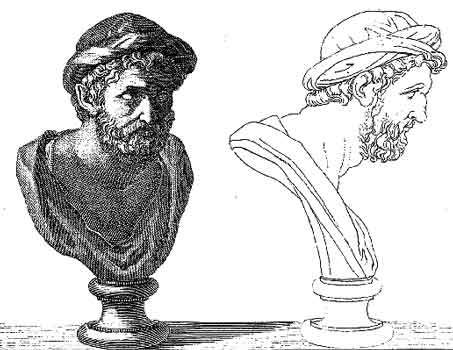|
|
 Archytas (Ἀρχύτας) (428 BC - 347 BC), was a Greek philosopher, mathematician, astronomer, statesman, strategist and commander-in-chief. Archytas was born in Tarentum, Magna Graecia (now Italy) and was the son of Mnesagoras or Histiaeus. He was taught for a while by Philolaus and he was a teacher of mathematics to Eudoxus of Cnidus. He was scientist of the Pythagorean school, famous as the intimate friend of Plato. His and Eudoxus' student was Menaechmus. Sometimes he is believed to be the founder of mathematical mechanics. He is also reputed to have designed and built the first artificial, self-propelled flying device, a bird-shaped model propelled by a jet of what was probably steam, said to have actually flown some 200 yards. This machine, which its inventor called The Pigeon, may have been suspended on a wire or pivot for its "flight". According to Eutocius Archytas solved the problem of duplicating the cube in his manner with a geometric construction. Hippocrates of Chios before reduced this problem to finding mean proportionals. Archytas' theory of proportions is treated in the book VIII. of Euclid's Elements. The Archytas curve, which he used in his solution of the doubling the cube problem, is named after him. Archytas was drowned in the Adriatic Sea; his body lay unburied on the shore till a sailor humanely cast a handful of sand on it, otherwise he would have had to wander on this side the Styx for a hundred years, such the virtue of a little dust, munera pulveris, as Horace calls it.
Sources
References
Links
Retrieved from "http://en.wikipedia.org"
 |
|
||||||||||||||||||
